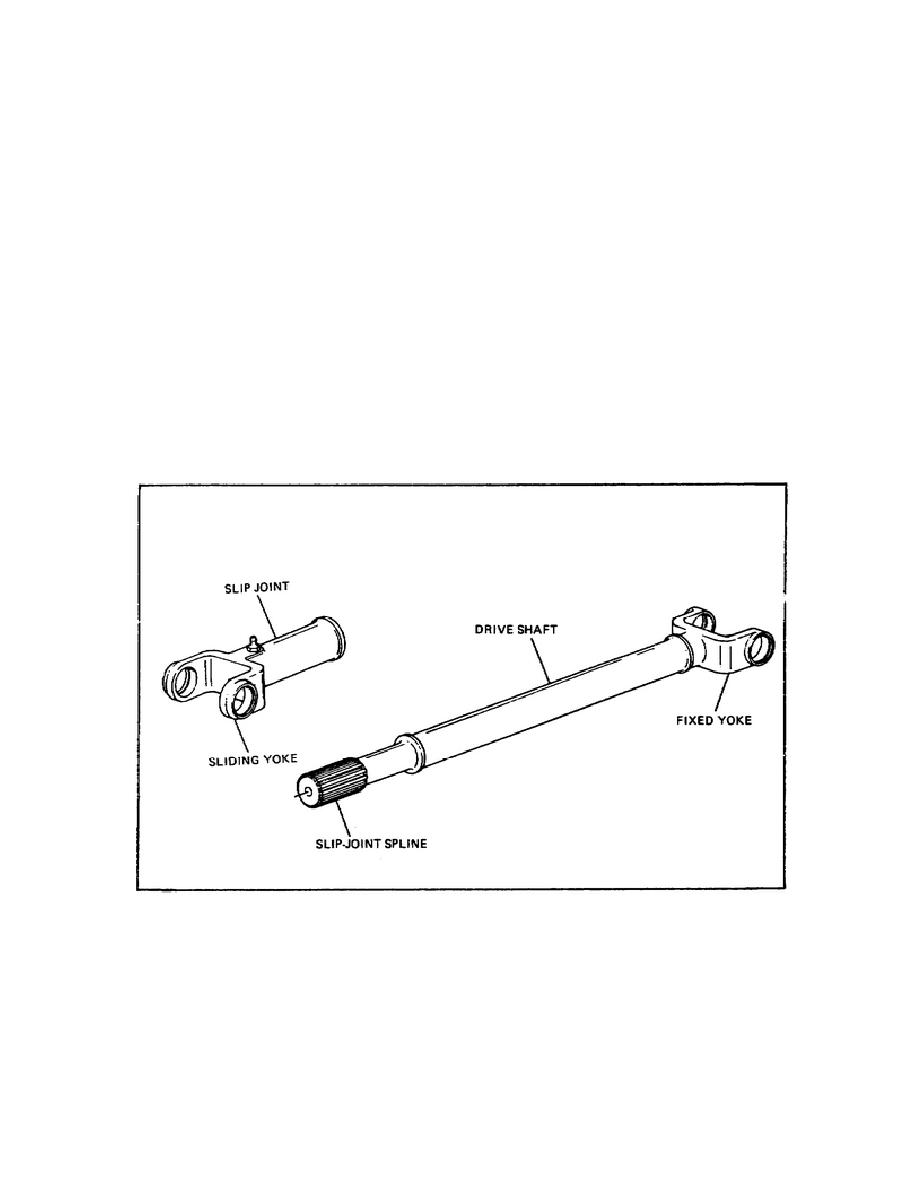
Lesson 1
Construction and Operation
Propeller shafts are made in many different sizes, shapes, and strengths, depending on the
needs of the different types of vehicles. One end of the shaft is built to house a universal
joint. The other end is usually splined to a slip joint. The shafts may be made of solid
steel or may be hollow (tubular). A hollow propeller shaft is usually preferred.
The twisting force (torque) applied to one end of a shaft is transmitted through the shaft
to its opposite end. The strain (stress) created within the shaft ranges from a minimum at
the shaft's rotational center (axis) to a maximum at its outside surface. Since the center
part of a shaft carries only a small portion of the load, tubular (hollow) propeller shafts
are used whenever possible. A solid shaft is stronger than a tubular shaft of the same
thickness (diameter). A tubular shaft, however, is much stronger than a solid shaft of the
same weight and length.
FIGURE 2. AXLE ASSEMBLY.
The power transmission system must be flexible because of the springs in the vehicle's
suspension system. As the springs flex, the axle assemblies move backward and forward
and up and down. This causes the angles and distance between the axle assemblies and
the transfer case to constantly change. Slip joints and universal joints installed on
propeller shafts provide flexibility and permit these changes in the power transmission
system.
3




 Previous Page
Previous Page
